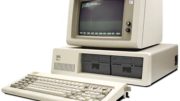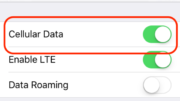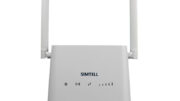Do you watch TV on your computer? Of course in order to answer that question we need to define what “watch TV” means. While that would have been a straightforward question a generation ago, today it’s extremely hard to really come up with a consensus on what it means to “watch TV.” Does it mean parking yourself in the living room in front of a big screen? Does it mean watching video clips on your phone from TikTok, Facebook, or Twitter? Yes to both? Is a show on Netflix the same as a show on a broadcast network?
And, for that matter, what if you’re viewing video on your watch? Does that always, 100% of the time, make it “watch TV?”
When the answer was simpler and possibly less fun
Way back in 2012 I reported that Microsoft was stripping Media Center features out of Windows 8. Windows Media Center was a late-2000s idea from Microsoft, who had been trying to break into the living room for decades. To be sure the company had — and still has — an excellent entry with its Xbox gaming platform. That wasn’t wasn’t enough. It still sought to find ways to leverage its dominance in desktop computing. The goal at the time was for people to have a “living room PC.” Several manufacturers had tried and failed. Microsoft thought it could go where no one had gone before by building in TV tuner and DVR support into its Windows 7 PCs.
A great idea, but the world had even better ideas. Rather than draw people to spend more time in the living room, manufacturers like Apple and Samsung were encouraging people to take entertainment with them. It might seem blasé today, but in 2008 it seemed like magic when you could watch a video on your phone. As cell networks and handsets got better and smarter it became easier and easier. Early apps like Slingplayer even made it possible for you to watch live content no matter where you were.
2012: The year of bad decisions coming home to roost
By 2012 Microsoft had been mired in a string of bad decisions. Its Windows 8 operating system was considered a flop due to its reliance on touchscreen gestures. People simply didn’t want that for their desktop PCs and they didn’t want to use laptops when tablets and phones could do.
Faced with big problems, Microsoft started making big changes. They realized people weren’t ready to give up on the PC as a workplace tool. If the PC was to survive at all it would need to be as functional on a desk as it ever had been. That meant structural changes. The first, Windows 8.1, restored the start button to the lower left of the screen in a largely ceremonial move. While work was afoot on that project, Microsoft started stripping out extra features from Windows in order to make it nimble, fast, and secure. (Trust me, as someone who has used Windows since version 2 those are three words that weren’t associated with Windows until recently.)
One of those decisions, something I lambasted them for, was taking Media Center support out of Windows. I still think Media Center would have been a great option if it had gained support from major pay-TV companies, but that wasn’t possible given its insecure nature. And so I railed when the company took it out. As usual, the world didn’t give one hoot about what I thought.
It slowly got better
Windows got better quickly as older code was tossed out. Today Windows 10 is as stable and secure an OS as you’ll find. And, it’s just as capable of video. Even before I had written that article, DIRECTV had rolled out its “DIRECTV Everywhere” experience. We take it for granted today, but this let people watch live and on-demand programming from virtually any device. It made the idea of the “living room PC” obsolete.
Not only that, but the Windows store slowly gained popular apps like Netflix and Hulu. While Windows 10 continued to shine as a desktop OS, it slowly gained some traction as a tablet OS as well. And, probably the biggest change of all: we stopped thinking of the PC as the way we get our content. Today well over half of all content consumption takes place on mobile devices, and PCs are just one part of the entire picture.
And so, no one really cares or even remembers Windows Media Center. It was a cool idea but it turns out that your phone is an even cooler one.





